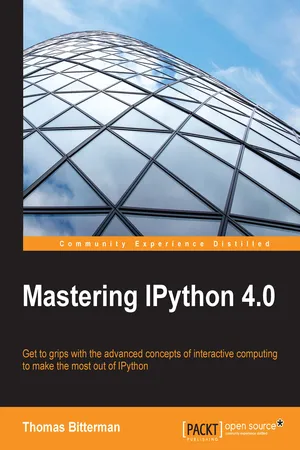
- 382 pages
- English
- ePUB (mobile friendly)
- Available on iOS & Android
Mastering IPython 4.0
About This Book
Get to grips with the advanced concepts of interactive computing to make the most out of IPython
About This Book
- Most updated book on Interactive computing with IPython 4.0;
- Detailed, example-rich guide that lets you use the most advanced level interactive programming with IPython;
- Get flexible interactive programming with IPython using this comprehensive guide
Who This Book Is For
This book is for IPython developers who want to make the most of IPython and perform advanced scientific computing with IPython utilizing the ease of interactive computing.
It is ideal for users who wish to learn about the interactive and parallel computing properties of IPython 4.0, along with its integration with third-party tools and concepts such as testing and documenting results.
What You Will Learn
- Develop skills to use IPython for high performance computing (HPC)
- Understand the IPython interactive shell
- Use XeroMQ and MPI to pass messages
- Integrate third-party tools like R, Julia, and JavaScript with IPython
- Visualize the data
- Acquire knowledge to test and document the data
- Get to grips with the recent developments in the Jupyter notebook system
In Detail
IPython is an interactive computational environment in which you can combine code execution, rich text, mathematics, plots, and rich media.
This book will get IPython developers up to date with the latest advancements in IPython and dive deep into interactive computing with IPython. This an advanced guide on interactive and parallel computing with IPython will explore advanced visualizations and high-performance computing with IPython in detail.
You will quickly brush up your knowledge of IPython kernels and wrapper kernels, then we'll move to advanced concepts such as testing, Sphinx, JS events, interactive work, and the ZMQ cluster. The book will cover topics such as IPython Console Lexer, advanced configuration, and third-party tools.
By the end of this book, you will be able to use IPython for interactive and parallel computing in a high-performance computing environment.
Style and approach
This is a comprehensive guide to IPython for interactive, exploratory and parallel computing. It will let the IPython get up to date with the latest advancements in IPython and dive deeper into interactive computing with IPython
Frequently asked questions
Information
Mastering IPython 4.0
Table of Contents
Table of contents
- Mastering IPython 4.0